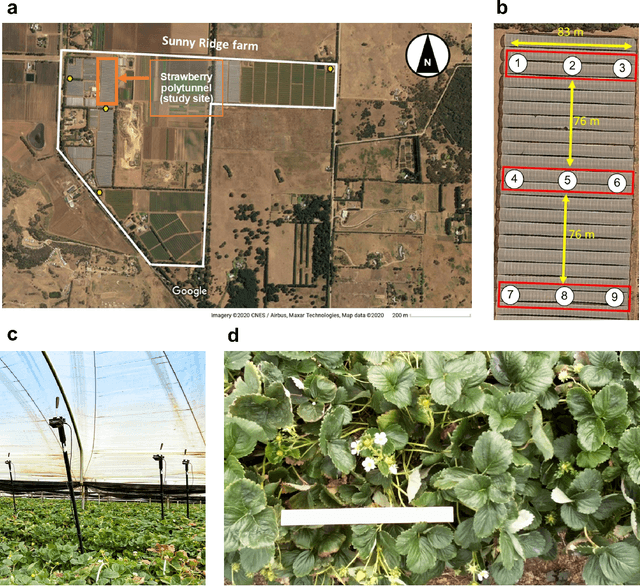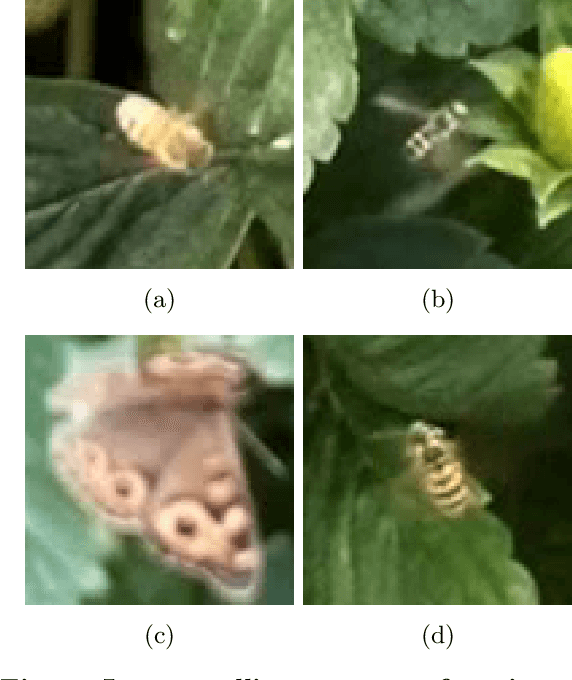Malika Nisal Ratnayake
Motion-based video compression for resource-constrained camera traps
May 23, 2024Abstract:Field-captured video allows for detailed studies of spatiotemporal aspects of animal locomotion, decision-making, and environmental interactions. However, despite the affordability of data capture with mass-produced hardware, storage, processing, and transmission overheads pose a significant hurdle to acquiring high-resolution video from field-deployed camera traps. Therefore, efficient compression algorithms are crucial for monitoring with camera traps that have limited access to power, storage, and bandwidth. In this article, we introduce a new motion analysis-based video compression algorithm designed to run on camera trap devices. We implemented and tested this algorithm using a case study of insect-pollinator motion tracking. The algorithm identifies and stores only image regions depicting motion relevant to pollination monitoring, reducing the overall data size by an average of 84% across a diverse set of test datasets while retaining the information necessary for relevant behavioural analysis. The methods outlined in this paper facilitate the broader application of computer vision-enabled, low-powered camera trap devices for remote, in-situ video-based animal motion monitoring.
Spatial Monitoring and Insect Behavioural Analysis Using Computer Vision for Precision Pollination
May 10, 2022



Abstract:Insects are the most important global pollinator of crops and play a key role in maintaining the sustainability of natural ecosystems. Insect pollination monitoring and management are therefore essential for improving crop production and food security. Computer vision facilitated pollinator monitoring can intensify data collection over what is feasible using manual approaches. The new data it generates may provide a detailed understanding of insect distributions and facilitate fine-grained analysis sufficient to predict their pollination efficacy and underpin precision pollination. Current computer vision facilitated insect tracking in complex outdoor environments is restricted in spatial coverage and often constrained to a single insect species. This limits its relevance to agriculture. Therefore, in this article we introduce a novel system to facilitate markerless data capture for insect counting, insect motion tracking, behaviour analysis and pollination prediction across large agricultural areas. Our system is comprised of Edge Computing multi-point video recording, offline automated multi-species insect counting, tracking and behavioural analysis. We implement and test our system on a commercial berry farm to demonstrate its capabilities. Our system successfully tracked four insect varieties, at nine monitoring stations within a poly-tunnel, obtaining an F-score above 0.8 for each variety. The system enabled calculation of key metrics to assess the relative pollination impact of each insect variety. With this technological advancement, detailed, ongoing data collection for precision pollination becomes achievable. This is important to inform growers and apiarists managing crop pollination, as it allows data-driven decisions to be made to improve food production and food security.
 Add to Chrome
Add to Chrome Add to Firefox
Add to Firefox Add to Edge
Add to Edge